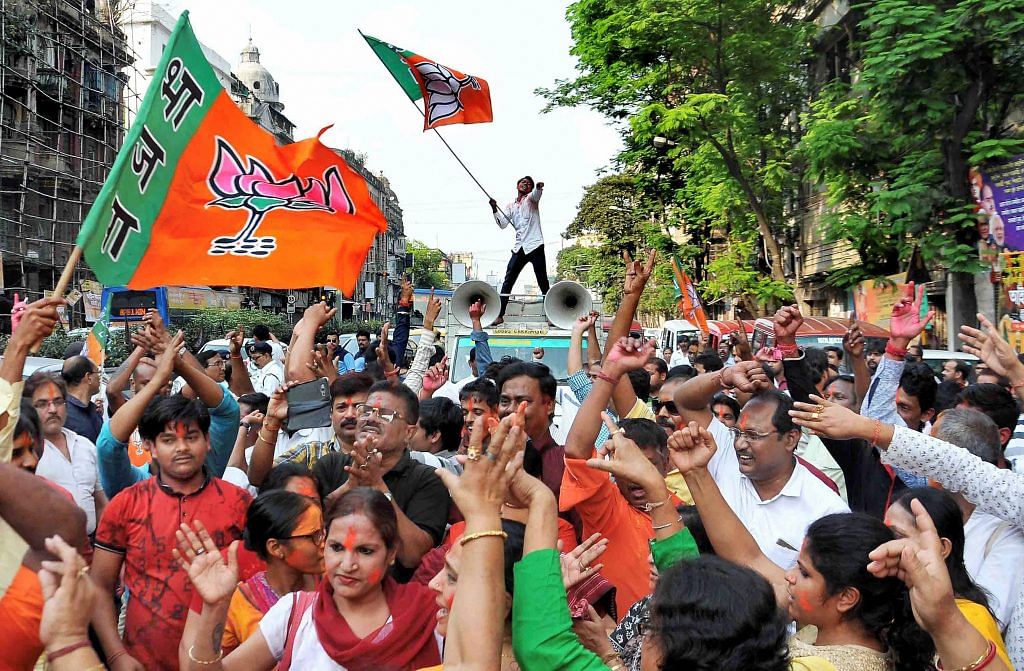How should we comprehend the results of Tripura, Nagaland and Meghalaya? Merely a routine exercise of electoral upheaval, or something more fundamental?
The Bharatiya Janata Party (BJP) surpassed all expectations by sweeping the Communist bastion of Tripura, and has also emerged as a formidable force in Nagaland. The Congress, on the other hand, has been wiped out in these two states and its voteshare reduced significantly in Meghalaya. The results confirm the emergence of the BJP as the focal point of this competitive space.
In our view, the BJP’s aggressive campaign in the Northeast was less about achieving another electoral milestone than occupying the ideological centre in the region and establishing itself as the system-defining party. After all, the seven sisters (plus Sikkim) account for only 25 Lok Sabha seats, with 14 from Assam alone.
More than electoral considerations, the region’s significance to the BJP’s ideological project is guiding the party’s political strategy. It is here that the Rashtriya Swayamsevak Sangh (RSS) meets its three long-time adversaries – illegal immigrants (read Bangladeshi Muslims), Christian missionary activities, and secessionist movements threatening territorial integrity – that are antithetical to the project of ‘akhand rashtra’.
Currently, the BJP runs governments in Arunachal Pradesh, Assam, and Manipur. It has dislodged the CPM in Tripura and has created a space for itself in Nagaland, where the party would certainly remain a key player in the state government for this term. In Sikkim, the Sikkim Democratic Front is a BJP ally. And Mizoram, headed for polls later this year, may see a bitter contest between the incumbent Congress party and the BJP-led North-East Democratic Alliance (NEDA), in which the Mizo National Front (MNF) is a key player. The fact that the BJP and its NEDA allies (NPP, UDP and HASDP) in Meghalaya did not contest the elections as a united front helped the Congress retain the position of single-largest party. However, with the allies coming together after the results to stake a claim to form the government, the BJP has clinched another state in the region.
Figure 1: The Rise of BJP in North-East
The BJP’s expansionist impulse is slowly but surely changing the contours of electoral competition in the region. And the Congress has been the principal loser. Figure 1 shows that the BJP has gained in every state of the region since the 2014 Lok Sabha elections, while the Congress’ inability to hold on to its turf is very evident from Figure 2.
In Nagaland and Tripura, the Congress not only ceded the opposition space even before the polling took place, but its sheer lack of enthusiasm during the campaign gave away any possibility of recovering lost ground in the near future. The BJP grabbed this opportunity in both states and contested like a formidable machine.
Figure 2: The Decline of Congress in North-East
However, the BJP also needs to be cautious. Its unbridled electoral success may also turn out to be its biggest threat as far as the party’s ideological project is concerned. There are two areas of concern. First, the possibility of tension between the core RSS network in the region, which has worked on the ground for decades with no political success, and the new BJP leadership, which has become a formidable election machine in less than three years. The BJP’s state-level leadership in the region, across various levels, is heavily comprised of defectors from the Congress and regional parties. Some key players in the BJP’s expansion in the region, Himanta Biswa Sarma (chairman of NEDA) and the chief ministers of Arunachal Pradesh and Manipur (Pema Khandu and N Biren Singh, respectively), are former Congressmen, while Assam CM Sarbananda Sonowal is a former Asom Gana Parishad (AGP) leader.
Second, the party’s social base is undergoing a massive transformation. Many groups that didn’t support the BJP in the past are now voting for it. How long will the party be able to manage this coalition of extremes, especially the new entrants who may not share the BJP’s ideological world-view as enthusiastically as the party’s core constituents?
And these challenges to the BJP are not specific to the Northeast. In some ways, Modi’s continued electoral success post-2014 has changed the BJP itself. How the RSS and the BJP’s core constituents react to this changing ideological centre and social base of the party is likely to define Modi’s strategy in the battle of 2019.
The writers are PhD students in political science at University of California Berkeley, US.
